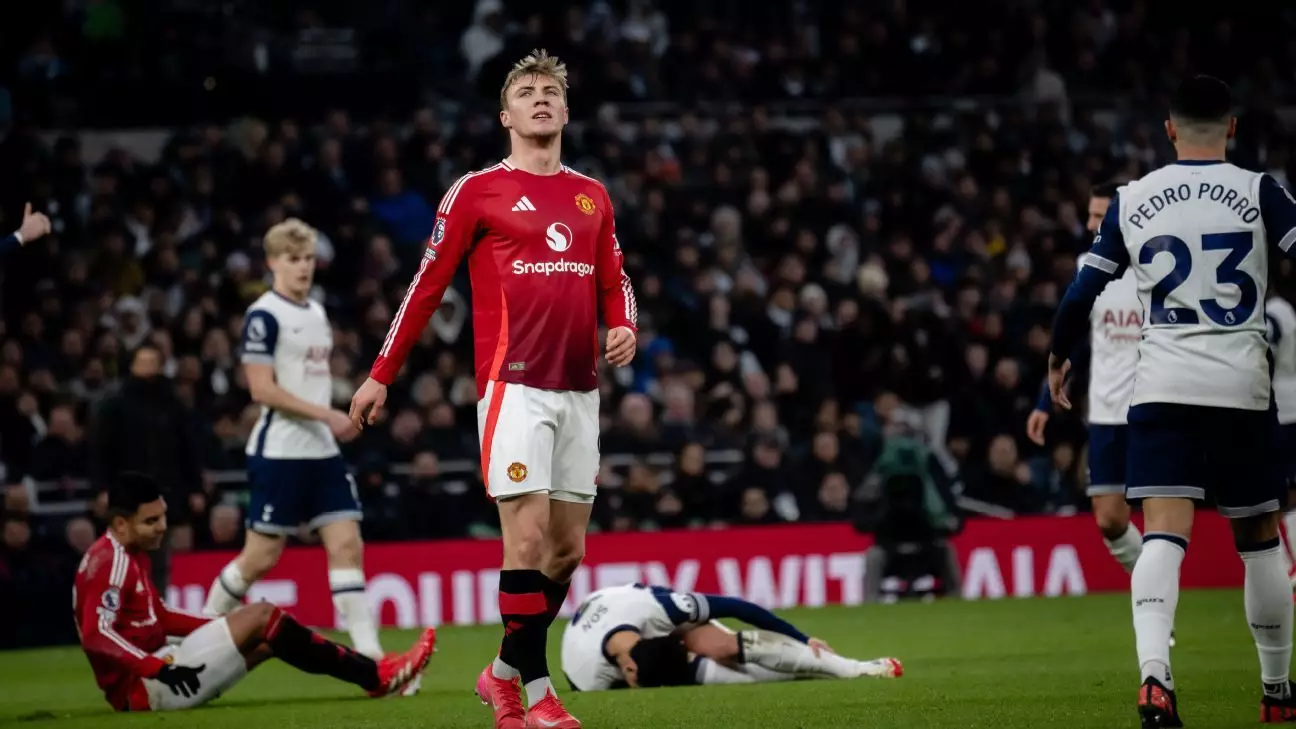In football, the age-old adage “if you don’t shoot, you don’t score” rings truer now than ever, especially regarding Manchester United’s performance in recent times. With their struggles evident in the number of goals scored this season, it’s only natural to scrutinize the figure at the frontline: Rasmus Hojlund. As the team’s center forward, Hojlund’s shooting frequency raises alarm bells, as evidenced by stark comparisons with his contemporaries across the Premier League. This discrepancy begs a deeper examination into whether it’s the player’s limitations or broader systemic failures that plague Manchester United’s offensive strategies.
As it stands, Hojlund averages a mere 1.20 shots per 90 minutes, a feat that puts him behind 139 players in the Premier League, including numerous outfield players whose positions are far from center forward. This statistic underscores a potential issue, indicating an alarming trend where primary goalscorers are not capitalizing on scoring opportunities. When contrasted with players from rival clubs—like Erling Haaland’s astonishing 3.82 shots per 90 or Ollie Watkins’ 3.26—the question of Hojlund’s effectiveness becomes increasingly difficult to sidestep.
The managed expectation from a center forward must be accompanied by strategic positioning and the initiative to attempt attempts on goal. Unfortunately for United fans, Hojlund’s current output falls short of what is required at this level.
Under manager Ruben Amorim, questions arise about the system employed and its compatibility with Hojlund’s style of play. Amorim has previously managed Viktor Gyökeres at Sporting CP, a player who is enjoying notable success in terms of shot frequency, averaging 4.59 shots per 90 minutes. The striking contrast between Gyökeres and Hojlund raises eyebrows about the effectiveness of the tactical framework employed at Manchester United, as even Joshua Zirkzee, an experimental center forward under Amorim, has managed nearly 2 shots per game.
It is fair to scrutinize Amorim’s approach to identify whether he creates a conducive environment for center forwards to thrive in. Deploying a system that stifles goal attempts may highlight inherent inefficiencies in strategy, potentially dampening a striker’s natural instincts.
While it may be easy to point fingers at the young striker, a closer examination reveals complex layers contributing to his reductions in shot quantity. Hojlund’s time at Sturm Graz boasted similar patterns, and while the Bundesliga experience saw marginal improvement, the overall numbers still raise concerns about his willingness or ability to take shots on goal. The question persists: Does he lack confidence, or are his teammates failing to provide the necessary support?
When considering Hojlund’s playing style, it’s imperative to recognize that a striker’s role transcends goalscoring; it involves occupying space, drawing defenders, and providing assists. In this regard, comparing him to other forwards, such as Roberto Firmino, demonstrates that a less shoot-focused playstyle can sometimes yield favorable results for the team.
Navigating through these issues requires a multidimensional approach. Hojlund has demonstrated potential at a young age, turning just 22, and there remains hope for him to evolve into a dynamic center forward capable of meeting the demands of elite football. However, individual improvement must coincide with broader tactical adjustments made by Amorim. The coach must enhance United’s offensive framework, providing Hojlund with avenues to exploit defenses effectively.
Furthermore, integrating strategies that encourage Hojlund to embrace his role as a primary shooter may significantly inflate his shot statistics. Such transformations could stem from targeted training focused on positioning, confidence-building exercises, and match-time scenarios that cultivate instinct and decision-making under pressure.
As the season progresses, Manchester United faces pivotal decisions regarding Hojlund’s role in the squad and the efficacy of its current attacking strategies. Potentially, the club must assess the balance between nurturing talent and seeking out alternatives that may better fulfill shot-creating responsibilities. An inability to adapt could hamper their offensive capabilities, resulting in a stagnation of goal opportunities.
Moving forward, both Hojlund and Amorim must collaboratively realign their visions for success, fostering an environment conducive to both personal and collective achievements on the pitch. The future may yet hold the promise of improvement, but the time for action is now; unless change is instituted, the silence of the attacking line at Manchester United may echo painfully long into the season.

